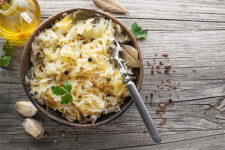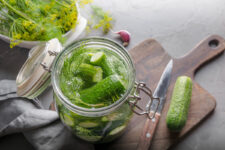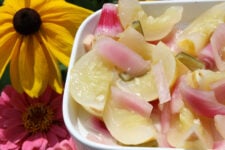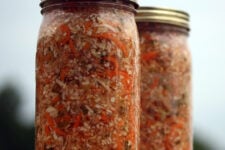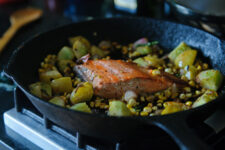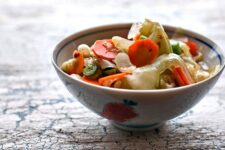Naturally cultured foods, such as these lacto-fermented pickles, are teeming with vitamins, live enzymes, and natural probiotics (bacteria that are helpful for reducing the amount of harmful organisms in the intestines). These were prevalent in the diets of our ancestors, yet they’re not frequently consumed by most people today.
Cultured (aka lacto-fermented) foods are good for everyone, but they are particularly useful if your digestion is poor or your immune system is weak (75% of your immune system’s cells reside in your digestive tract!). Cultured foods foster a healthy digestive environment, and contribute to optimal wellness overall.
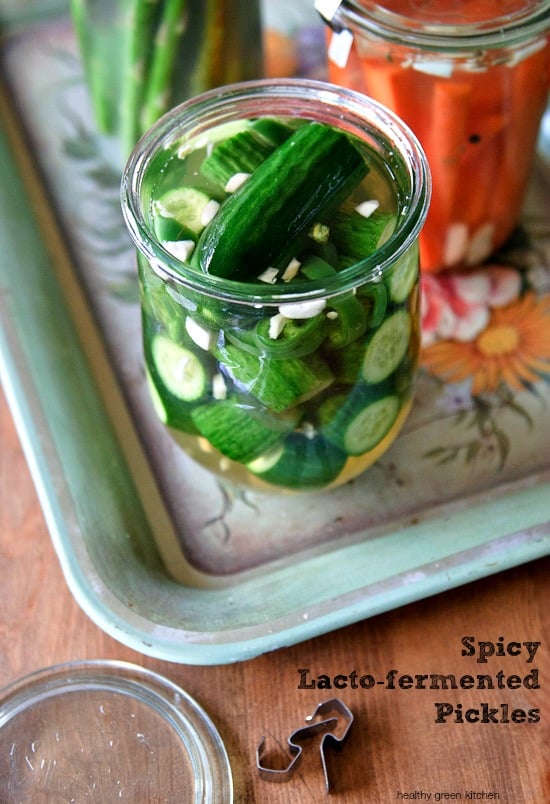
How lacto-fermentation works
Bacteria known as lactobacilli convert sugars and starches into lactic acid. The presence of lots of lactic acid results in a food that’s exceptionally nutritious and much less prone to spoilage. Before there was refrigeration and before foods were canned to extend their shelf life, they were naturally preserved in small batches using the lacto-fermentation method. Examples of lacto-fermented foods and drinks include yogurt, kefir, miso, kombucha, and vegetable preparations such as kimchi, sauerkraut, and lacto-fermented pickles.
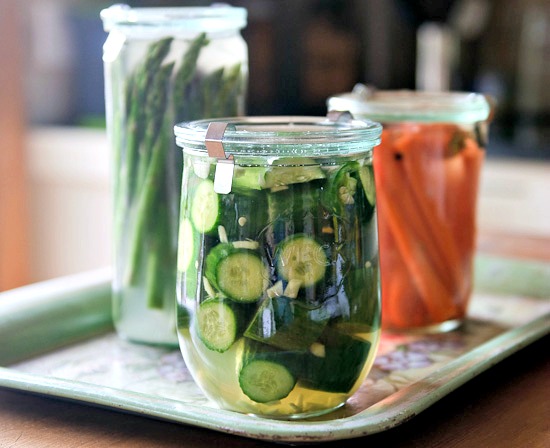
I try to include at least one serving of something that’s been lacto-fermented in my diet every day, but I eat more when I have any sort of digestive issue going on or on the rare occasion that I have to take antibiotics. You can purchase high quality versions of cultured foods at natural food stores, but I think knowing how to make your own is a good skill to have (plus you’ll save money). In the photos for this post, you see lacto-fermented asparagus, carrots, and cucumbers. I’ve included the recipe for the cucumbers below, along with some of my favorite fermentation resources.
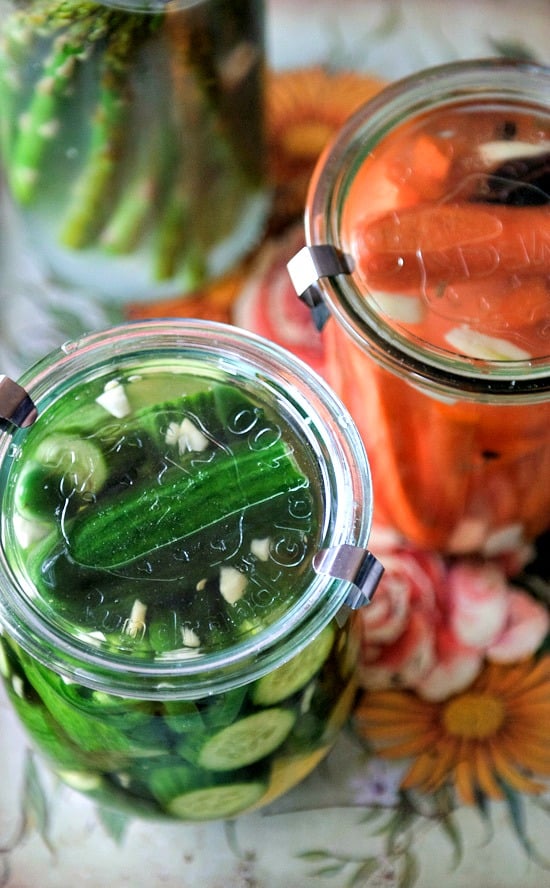
Lacto-fermented vegetables are a good place to start if you want to begin making your own cultured foods. These are particularly beneficial for you because they contain many nutrients as well as fiber: you can add them to all sorts of dishes as condiments. I’ve been making my own cultured vegetables for years: once you get the hang of the process, you’ll see how easy it is (you don’t need much more than veggies, salt, and a little time), and you’re sure to become hooked. Then you can look forward to always having some cultured veggies on hand to enhance your meals…and your health!
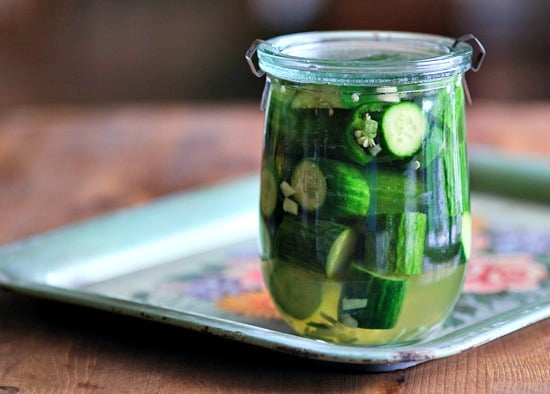
More of my cultured/lacto-fermented recipes:
Spicy Lacto-fermented Pickles
Ingredients
- 5-6 pickling cucumbers Kirby cucumbers, or 6 or 7 small Persian cucumbers (about 1 lb/455 g), ends trimmed off, and cut into 1 to 2 inch pieces
- 1 tbsp fine sea salt
- 1 tbsp all-natural Thai fish sauce or wheat-free tamari
- 1 tbsp pure maple syrup
- 1 jalapeño pepper thinly sliced
- 1 tbsp minced garlic
- 1 tbsp minced ginger
Instructions
- Clean the glass jar in hot, soapy water, or use the hottest setting on your dishwasher.
- Combine the cucumbers with the salt, fish sauce, maple syrup, jalapeño. garlic, and ginger in a medium bowl. Mix well, then transfer everything to the glass jar. If a few pieces of the cucumbers don't fit, that's fine; you can just eat them.
- Add enough water (preferably filtered water) so the liquid covers the cucumbers. (The cucumbers may want to pop up over the brine, so to ensure they stay below it, I've started putting a piece of sliced cucumber over the top of the pickles as a "weight"…you can see what I mean in the top photo of this post). I discard the "cucumber weight" once I transfer the pickles to the refrigerator.) It's important to leave about 1 inch/2.5 cm. of room at the top of the jar before closing the lid. If you don't leave enough room, liquid may seep out of your jar as the pickles ferment.
- Allow your pickles to sit at room temperature for 2 to 4 days. You'll know they're done when the brine begins to bubble; do not worry if the brine is a bit cloudy- this is completely normal (it's also normal for the hue of the cucumbers to darken a bit). Enjoy right away, or store in the refrigerator, where the pickles with keep for at least 2-3 weeks: the heat from the jalapeños will mellow a bit as they sit in the brine.
Notes
- These pickles are a little bit sweet and pack quite a bit of heat; I adore them and snack on them frequently.
- For this recipe, you’ll need a 1-qt/960-ml glass canning jar with a lid made of metal, BPA-free plastic, or glass.
- To keep your pickles extra crisp, you can try adding something that provides tannins, such as a horseradish, oak, or grape leaf (I do not generally do this and I think the pickles are just fine).

